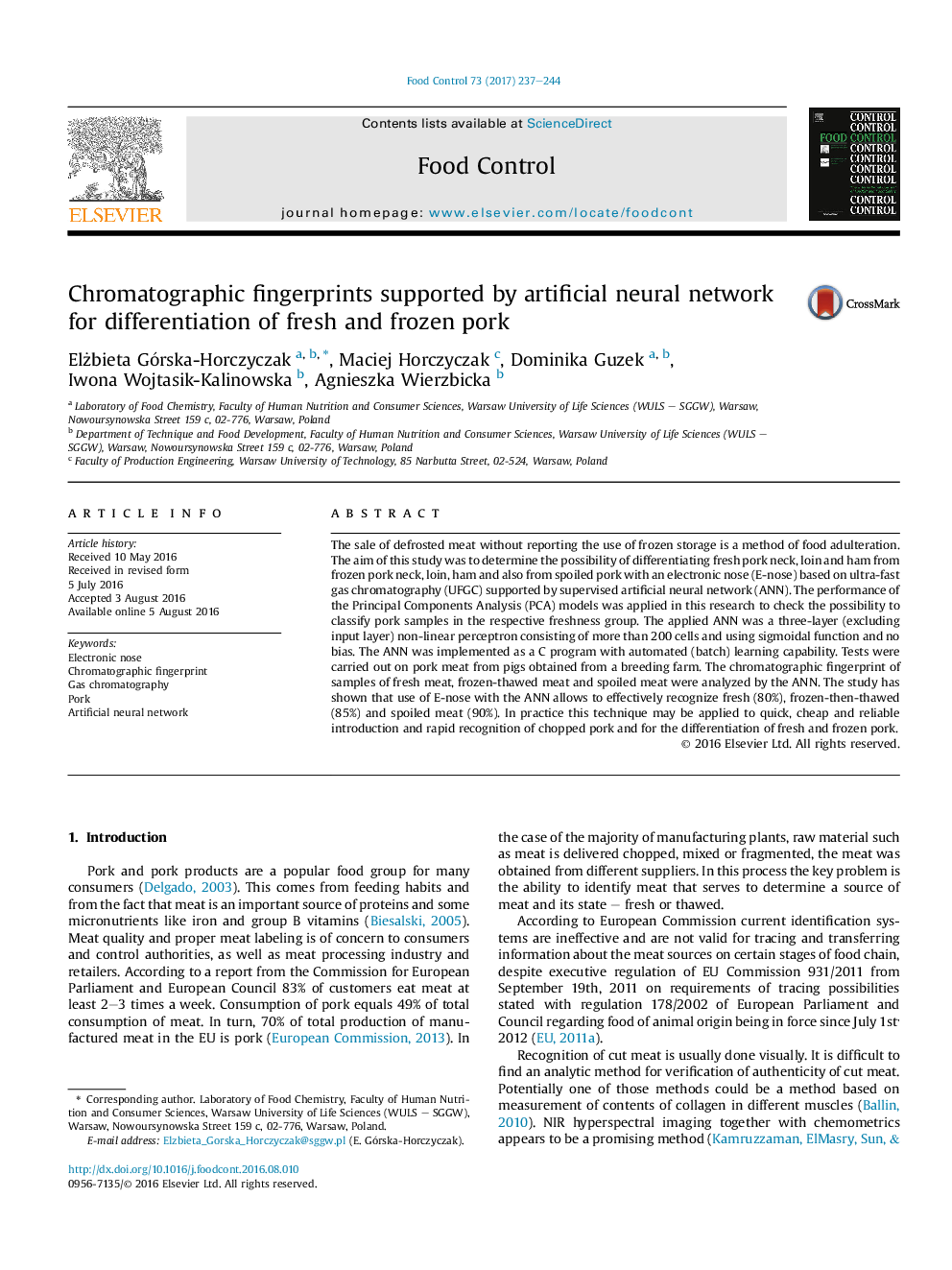| کد مقاله | کد نشریه | سال انتشار | مقاله انگلیسی | نسخه تمام متن |
|---|---|---|---|---|
| 5767636 | 1413202 | 2017 | 8 صفحه PDF | دانلود رایگان |
- E-nose with ANN was applied for the differentiation of fresh and frozen pork.
- Technique for cut pork meat recognition was developed.
- ANN for recognition of chromatographic fingerprints was designed and implemented.
- Application of nondestructive fingerprint measurement to assess pork freshness.
The sale of defrosted meat without reporting the use of frozen storage is a method of food adulteration. The aim of this study was to determine the possibility of differentiating fresh pork neck, loin and ham from frozen pork neck, loin, ham and also from spoiled pork with an electronic nose (E-nose) based on ultra-fast gas chromatography (UFGC) supported by supervised artificial neural network (ANN). The performance of the Principal Components Analysis (PCA) models was applied in this research to check the possibility to classify pork samples in the respective freshness group. The applied ANN was a three-layer (excluding input layer) non-linear perceptron consisting of more than 200Â cells and using sigmoidal function and no bias. The ANN was implemented as a C program with automated (batch) learning capability. Tests were carried out on pork meat from pigs obtained from a breeding farm. The chromatographic fingerprint of samples of fresh meat, frozen-thawed meat and spoiled meat were analyzed by the ANN. The study has shown that use of E-nose with the ANN allows to effectively recognize fresh (80%), frozen-then-thawed (85%) and spoiled meat (90%). In practice this technique may be applied to quick, cheap and reliable introduction and rapid recognition of chopped pork and for the differentiation of fresh and frozen pork.
Journal: Food Control - Volume 73, Part B, March 2017, Pages 237-244
